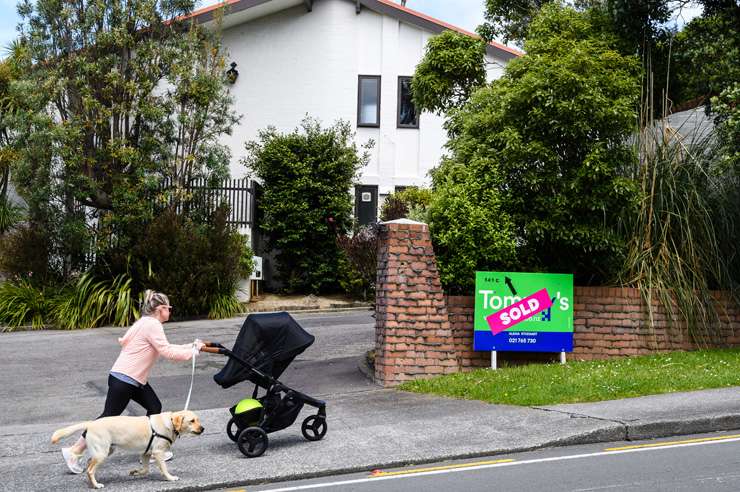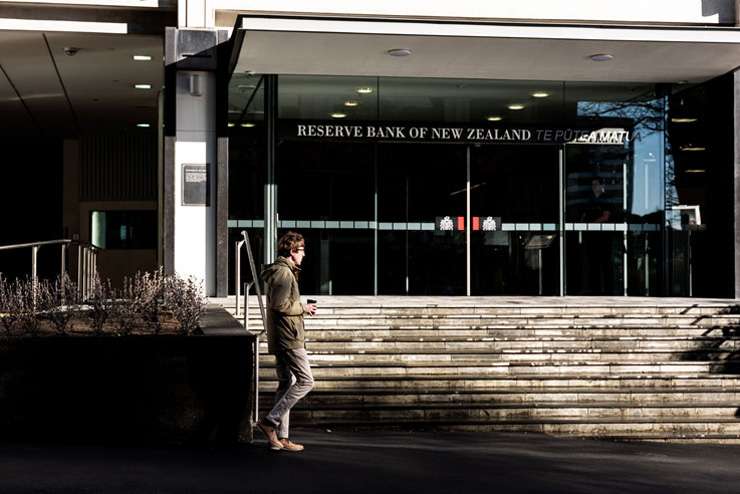The fact house prices fell 12% through the latter half of 2022 without “blood on the floor” is the best news of the year, says Sharon Zollner, chief economist for ANZ.
“We’re sitting here with 2% of people in negative equity and very few of them in a must-sell situation.”
The price drop reflects how rapidly prices went up as much as anything else in a year where the Reserve Bank struggled to get the traction it expected on inflation but which it needs to get, Zollner says.
Key to keeping the blood off the floor has been the high employment rate and the strong wage growth.
Start your property search
“You put those two things together along with the excess savings from the Covid era and households are remarkably resilient. That’s a large part of the reason why the adjustment has been so orderly.”
ANZ is forecasting an 18% fall in house prices which Zollner says would equate to a 27% fall in real house prices – or a 27% improvement in housing affordability if also taking into account wage forecasts.
“That’s huge. It would take us basically back to where we were pre-Covid in terms of real house prices, real housing affordability.”
But the economist points out it’s easy to forget that before Covid the nation was having angst-filled discussions about housing affordability.
“It would take another fall as big again to take us back to where we were in 2010 – I suspect there would be some blood on the floor if that was to happen.”
Zollner says a “dirty little secret” of high inflation is that it greases the wheels of relative price adjustments, which means if prices are going up when the price on something does not go up it has effectively fallen in real terms.
“Falling nominal house prices put people in negative equity - rising wages don’t, so we’ve got an 18% fall in nominal house prices in our forecast from peak but we will have had double digit increases in household income over that time and that doesn’t put people in negative equity.
“It’s not a get-out-of-jail free card. That very strong wage growth is part of the reason that the interest rates are going up but it is a less painful path than if nominal house prices fell 27%.”
There’s still the risk of a nasty offshore shock and the country falling into a deep recession with rising unemployment but Zollner says the country is so far inching itself out of the corner it painted itself into in recent years.

A sold sign outside a house in Wellington at the end of 2020. Buyers who bought at the height of the market may be at risk of falling into negative equity as a result of value drops. Photo / Getty Images
Interest rate hikes have hit business and consumer confidence, and stressed out people who bought their first home in the last two years, but Zollner says they are a small proportion of people and consumer spending has been holding up.
That’s good news – but it’s bad news from the Reserve Bank’s perspective which has a sense of urgency in terms of slowing the economy down.
Zollner says the danger is the longer inflation stays at high levels the more normalised it becomes and the harder it is to bring it down, and people have become used to wage increases and price increases.
“I get an email from the cattery, ‘our prices are going up’. My reaction is, ‘of course they are’, not ‘I’m gonna jump on the Internet and I’m going to do a Google search and look at every cattery in 100 miles and find a cheaper one’, because I just know everyone’s prices are going up.”
So far, despite hiking rates aggressively, there is no evidence the Reserve Bank here has managed to open up spare capacity in the economy, Zollner says.
While that will come nearly 60% of ANZ mortgages are still at a rate of under 4% yet in the next six months about 50% will roll over on to higher rates.
That will hurt people but will likely hurt less if they have had a bigger wage increase than they were imagining a year ago, she says.

The Reserve Bank headquarters in Wellington. The central bank has lifted the OCR above 4% and given warnings further big rises. Photo / Getty Images
“It’s not that the Reserve Bank isn’t having any impacts, it’s just that the estimate of how much interest rates need to go up to slow things down just keeps going up.”
Zollner says in the 1970s in New Zealand inflation was all over the place: “It went up to 10, down to six, up to 15, down to 10.
“The lesson from the ‘70s is you can’t let up too soon because once you’ve got those inflation fires burning you need to tip a lot of cold water on it.”
Next year, she says, is likely to be more fractious with debates about whether central banks are doing the right thing.
“The historians will be going ‘but, but the ‘70s’, but the politicians and the real estate agents and everyone else will be going ‘hey, you’re overdoing it, you’re going to cause a harder landing than necessary, ease up’.
“The central banks genuinely won’t know when they’ve done too much or when they’ve done enough because the lags in monetary policy are so long, it takes 12 to 18 months.”
Zollner’s advice to homeowners over what they should do with their mortgages, given the unpredictability of inflation which might not necessarily fall, is not to put all their eggs in one basket.
“You can divide your mortgage up at no extra cost and fix some for three years, some for one year, leave some floating. There’s no extra cost to doing that, you don’t have to put it all in one term.
“Just divvy it up, put a bob each way. You rule out nailing it but you also rule out the worst case scenario and for most people that would help them sleep at night.”


















































































